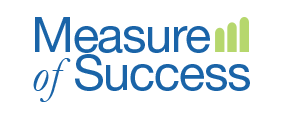© 2024 Measure of Success. Created for free using WordPress and Kubio
Blog Posts
Latest Comments
Persistent thought-provoking joke #2
Having shared passengership on an ill-fated cruise, three professionals (a mechanical engineer, a chemist and an economist) find themselves marooned on a desert island with[…]
The solvable problem with Self Evaluations
I have a vivid memory of a self-evaluation from my undergrad days at McGill. We had to take a writing course, which must have been[…]
All I really need to know I learned in… Business School?
Every once in a while you will see the “Everything important I learned in Kindergarten” claims that list insights like: clean up after yourself, share[…]
The rules by which we roll
Let’s describe “an organization” as a collection of people with some degree of shared purpose (what we are doing) interacting within norms of some similarity (how we[…]
Learning fast and slow – Educating and Credentialing
Earlier this month the Financial Post magazine did its feature on MBA programs part of which was MBA alumni commenting on how their education contributed[…]
Diversity Boxes – ticking and talking
The Schumpeter column of The Economist took a run at diversity this week with the hypothesis that fatigue is big part of the problem. This[…]
Do the Right Thing – Sorry Spike, it’s not that easy…
Long before Spike Lee’s movie, the concept of “do the right thing” was familiar to people both in the workplace and in other facets of life.[…]
The Balancing Act of Collaborating
There is lots of talk about “getting on the same page,” but in most work situations some level of conflict persists and can vary from[…]
Aligning for Performance – Where to start
The Lululemon stories coming out this week illustrate, if nothing else, that running a successful business is a complicated endeavour. There are a number of[…]
The Leadership Blackbox (Survey Insights Part 2)
There is an understanding that with authority comes the responsibility to make decisions. Personal style, organizational structure and corporate culture can encourage varying degrees of[…]
© 2024 Measure of Success. Created for free using WordPress and Kubio
